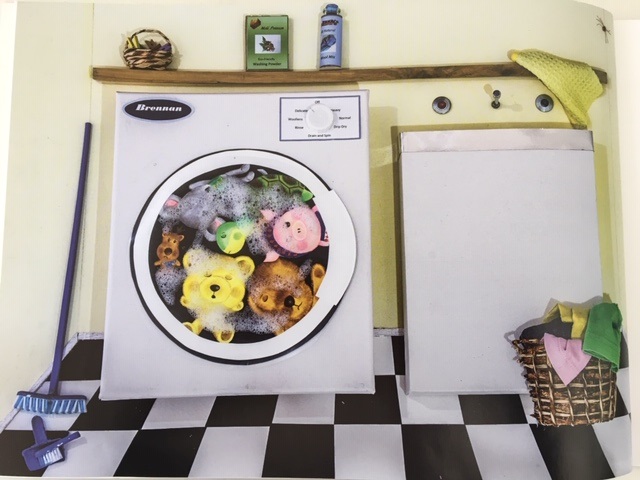Review by Sam, 8 years What is the book about? There are seven short stories…
The Reason Boys Don’t Choose to Read ‘Girls” Books
It is widely believed that boys prefer to read about male protagonists. But, before we decry the way that boys are not interested in girls’ stories, it is worth taking a look at the bookshelves.
A quick glance at the books for young readers reveals a clue as to why young boys don’t want to read girls’ books: many are so clearly marked with pastel, glittery covers showing girls swinging tiny bejewelled bags that their intended audience couldn’t be clearer.
The covers of series aimed at boys are equally predictable, often featuring a boy peering either cheekily, meekly or bravely out against a brightly-coloured backdrop. There are few girls to be seen, just a wimpy kid, a funny kid, a sporty kid, or a bad guy, and as a result, assume these books are not for them.
My seven-year-old son has recently started reading short chapter books, and as a treat, I took him to the bookshop to choose his own. Aware of the role books can play in helping readers develop empathy and forming attitudes, I hoped he would choose a book that wasn’t overtly aimed at boys, perhaps with both a boy and girl at the centre of the story. However, sadly, it was difficult to steer him in this direction when faced with a wall of books clearly differentiated along gender lines.
While some might argue that in reality boys and girls are different and have different interests – boys want to read about action and adventure, while girls are more interested in friendships and fantasy – this is not the reality that I see in the playground for children at this age. At my son’s school, the children play together at lunchtime, regardless of gender. Although some of their interests might diverge, clearly they also have interests that align in the playground, so why not between the pages?
And even if they do have different interests, does the clear differentiation between books for boys and girls in literature do both a disservice, demarcating their paths so clearly and missing an opportunity?
There are many writers who are making a concerted effort to produce books that appeal equally to boys and girls and helping children develop a healthy respect for the opposite gender, or ideally, an understanding that we’re all in this together.
However, the reality in the bookshop I visited for this age group, was disappointing. From Clementine Rose to Ella Diaries, Alice-Miranda to Billie B Brown or The Dork Diaries, there is no mistaking to whom to books are marketed.
The problem mirrors the portrayal of books in the genre dubbed ‘chick lit’. Writers have spoken out about their frustration about the marketing of chick lit, with books recognisable for the pastels, title font and imagery used on their covers. In May this year, bestselling author Jojo Moyes hit out at the clichéd cover designs of her books, saying they were putting men off reading them.
According to the Daily Telegraph, Moyes explained:
‘It’s so reductive and disappointing – it puts off readers who might otherwise enjoy them. If it was up to me, we would all discover things in a huge massive jumble.
‘The boundaries are being blurred with women writing domestic noir and thrillers. I want to see covers that are a bit more gender neutral. Supermarkets wanted things that are easily categorised, but people don’t want to read something pink and glittery.’
It is not hard to see similarities in the offerings for early readers. Writer and illustrator Lauren Child, author of the Charlie and Lola series, said publishers were often responsible for differentiating between the genders on the cover of books.
“Very often, if you write a book that has a lead character that is a girl, publishers want you to slightly ‘girlify’ it, to make it look more like a girl’s book. [They think:] ‘Let’s not even try to sell it to boys.’” Over the last few years, there has been an explosion of pink-covered, glittery books.”
However, it might not just be publishers who are to blame. Staff from Readings bookstores in Melbourne made an interesting observation that it was often parents who tended to choose books with male protagonists for boys, and vice versa.
One staff member reported: “I am constantly surprised by how often adults are reluctant to buy books for boys with girl protagonists. There is an excellent post-apocalyptic graphic novel called The Girl Who Owned a City by Trina Robbins. It has a really high success rate for reluctant readers of all genders and I sometimes have a hard time not reacting when adults immediately brush it off as a ‘girls book’ because it has a girl on the cover. Occasionally I have pointed out that it has a person on the cover.”
Another staff member claimed that parents were so often invested in the gender of the protagonist that they had resorted to describing the story to customers in gender-neutral terms to ensure the choice wasn’t coloured by gender.
Perhaps we all need to try harder to ensure that both boys and girls have the opportunity to enjoy all of the wonderful books available to them, especially in these formative years. The more they see each other in stories, in different contexts and with diverse personalities and interests, the better they can understand how very alike they really are.
Books for pre-teens that break down gender stereotypes
The Girl in the Dress – you get a feeling that David Walliams was having a real laugh while writing The Girl in the Dress, but he also has an important message about gender and individuality. Led by his hero, Lisa, 12-year-old Dennis is not afraid to let his true, unconventional self, shine through.
The Alien Zoo … and You – in this book about siblings who are forced to take over their grandfather’s alien zoo, gender is irrelevant as the two learn how to manage some hairy situations.
Lintang and the Pirate Queen – this is an adventure story by Tamara Moss in which a girl who dreams of having adventures in the high seas, and gets her chance when her bravery earns her a place on a pirate queen’s ship.
The Harry Potter series – while Harry is undoubtedly at the centre of JK Rowling’s books, Hermione is a strong character who well and truly holds her own, finding her power in hard work and friendship. Brave, intelligent and loyal, what boy or girl would not want a friend like Hermione?
Matilda – in Roald Dahl’s book, a young girl manages to overcome obstacles including a nightmarish headmistress and narcissistic parents to ultimately triumph. Her strength is quiet, but compelling, and the story is as relevant to boys as it is to girls.
The Polly and Buster series – Sally Rippin’s books feature the unlikely combination of Polly the witch and Buster the monster as they face different adventures. These are stories that show the strength of friendship, despite differences.




Comments (0)